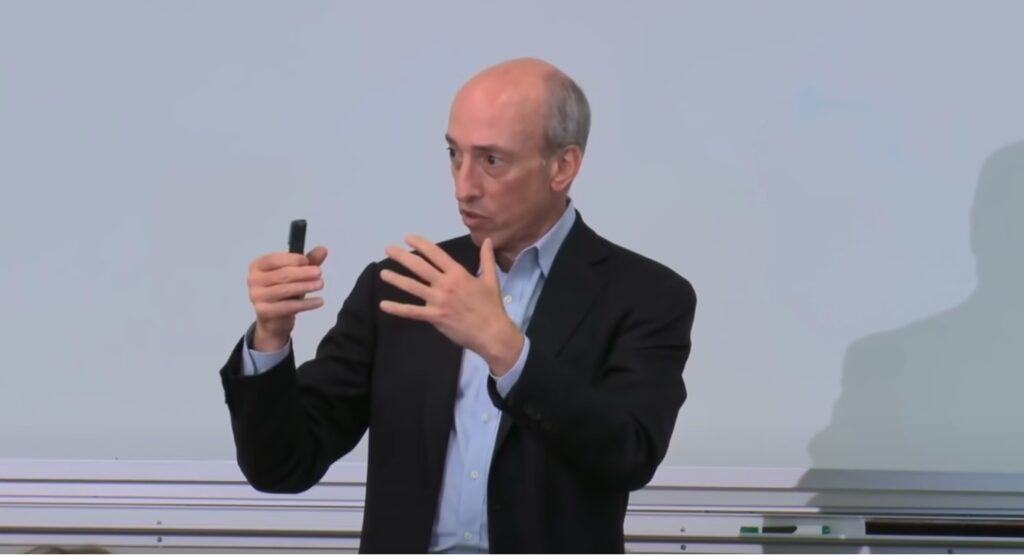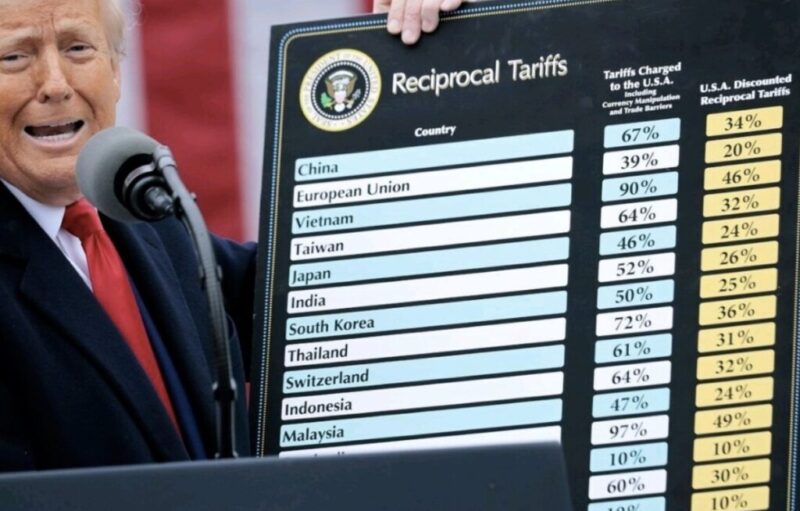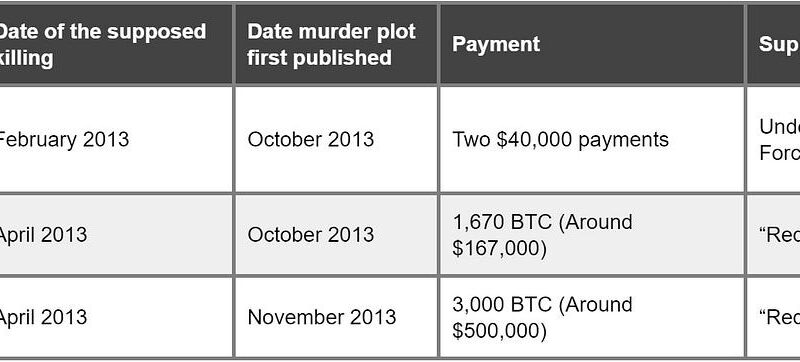Abstract: In this piece, we compare the gold & precious metals trading community (gold bugs) in the 2009 to 2012 period, to that of today’s cryptocurrency community. In particular we look at the similar and controversial nature of the role played by US regulator Gary Gensler today and thirteen years ago. In both cases, some members of the respective fervent online communities accused Gensler of inappropriate and inconsistent regulatory practices. In addition, he was accused by some of failing to protect small investors, while unfairly succumbing to the requirements of large established financial institutions. Whatever you think of Mr Gensler, it’s important to bear in mind his unique experience. Gensler has done this all before and he may therefore be more resilient to all the pressures he is under than some people think.

Overview
Gary Gensler, the chairman of America’s Securities and Exchange Commision (SEC), is the man of the moment in the cryptocurrency space. He is almost at the centre of everything, regulatory action against Coinbase and Binance, Bitcoin ETF applications, accounting rules that could prevent institutions acting as crypto custodians and a whole host of legal cases. These SEC activities have been a key driver of cryptocurrency prices in recent times, both downward price momentum and upward movements when the SEC has a perceived defeat in the courts. Some in the cryptocurrency community are keen to oppose and ridicule Gensler and point out supposed potential logical fallacies, inconsistencies and contradictions in Gensler’s positions. Crypto Twitter is full of Gensler memes and even a Gensler coin has been produced. To some, Gensler is quickly emerging as the most prominent villain in the cryptocurrency space and he is under a high level of scrutiny.
However, not many of today’s young cryptopians may know this, but Gary Gensler has done this all before, at least to some extent. Gensler was also portrayed as a key villain to another passionate and dedicated online community in the past. The best candidate for Bitcoin’s ancestor movement is the conspiratorial macro trader/gold bug/gold & precious metals trader community in the 2009 to 2012 period. This group was not a friend of Gensler either.
This Goldman Sachs alumni may be the SEC chairman today, but back in an earlier cycle, he had a very similar position for commodities, chairman of the Commodity Futures Trading Commission (CFTC). And back then some in the partially internet driven community of gold and precious metal traders did not like Gensler either. Just as today, Gensler was also repeatedly accused by an active and passionate community of inappropriate regulatory action and failing to protect the interests of the small players, to benefit large financial institutions.
History never repeats itself, but it does often rhyme
In the below table we have tried to compare the situation in 2009 to 2012 to that of the cryptocurrency space today. While of course there are many key differences, there are also some odd similarities. Most notable of course is Gary Gensler, with a very similar and prominent role on both occasions.
|
Gold & precious metals traders |
||
|
Key Period |
2009 to 2012 |
2013 to present |
| Core narrative | Incompetent bankers lost a lot of money in the 2008 financial crisis. Politicians with conflicts of interest then bailed out the bankers with taxpayer money, which only exacerbated the situation by allowing the imbalances to build and further cementing crony capitalism and poor incentives. As a result of the large bailouts, the public debt burden is too high. The US government cannot pay back the debt and the end game is rampant inflation. This is why one should invest in gold, an asset whose value the government cannot inflate. |
The positive narratives around cryptocurrency are more varied than those for precious metals.
|
|
Ultimate vision |
The value of open interest for gold contracts on CME’s New York Mercantile Exchange are extremely high relative to the size of the physical market. Eventually, more and more traders will demand physical delivery of their long positions, such that the exchange will not be able to deliver. The exchange will then go bankrupt as the gold price rallies. This will contribute to a further loss of confidence in the US dollar. In order to restore confidence in the US dollar, the government will be forced to return to gold convertibility (as before 1971) except at a much higher price. This will result in less economic manipulation and therefore ultimately a stronger economy (after a period of pain). Holders of gold will become extremely wealthy. |
The ultimate vision for many is mass adoption of these distributed financial systems. This will then make the existing dominant centralised financial systems less relevant. This will thereby increase financial and economic freedom, which will result in a much stronger and more flexible economy, with commensurate value accretion for cryptocurrencies benefiting their holders. |
| Accusations of manipulation |
In order to defend the integrity of the US Dollar, the US authorities and the key banks they work with are manipulating the price of gold downwards. Accusations were made that traders at JP Morgan, HSBC and other large banks had access to exchange data, such that they could see the liquidation prices of other traders. Other accusations were that they deliberately caused and profited from crashes during illiquid periods. Another alleged problem was the lack of position limits, which enabled a few large entities to dominate and manipulate certain markets. Bullion banks were also accused of understating the amount of leverage with respect to unallocated bullion vs physical reserves. Some accused these banks of collaborating with the CFTC, who they allege allowed the traders to manipulate these markets, to defend the US dollar. Due to the supposed revolving door between regulators and large banks, which meant the regulators allowed manipulation to continue, this allegedly made it almost impossible for small traders to make profits trading in precious metals. |
Certain American interests allegedly do not want cryptocurrency to succeed and they want to protect the business models of the large established financial institutions, such as JP Morgan, Goldman Sachs, CME and Blackrock. These institutions are accused of having deeply embedded relationships with US regulators.The theory continues that US regulators will then unfairly come down hard on crypto native firms, with hypocritical interpretations of the legislation. We have seen allegations along these lines citing SEC’s action in respect of Coinbase, Binance, Silvergate and Digital Currency Group. At the same time the US regulators will allegedly “weaponise” the banks to achieve their regulatory objectives by encouraging them to block transactions they don’t like, such as transactions with crypto native firms. This will potentially allow established financial institutions to profit from the booming crypto space, without competition. At the same time, this will hamper real crypto adoption as the established platforms may not allow clients to withdraw to a blockchain. |
|
Community |
The global macro-economic precious metals community consisted of thousands of “day traders”, who spend hours per day trading precious metal contracts, along with other macro instruments, often with leverage, on various platforms. Many of these traders were financial service industry professionals, while some were amateurs. There are also many other members of the community who are non-traders.There were various news services, websites, podcasts, blogs and research distributors who enable sharing of the key narratives. Zerohedge was a key source of timely news and information. There were also several metals and mining investment conferences, which allowed community members to meet. Example thought leaders: Andrew Maguire, Jim Rickards, Felix Zulauf, James Turk, Peter Schiff, Gerald Celente, Eric Sprott, Pierre Lassonde, Jim Grant, Ron Paul, Doug Casey, John Mauldin, Stephen Leeb, Alasdair Macleod, Rick Santelli, Marc Faber, Chris Powell, Max Keiser |
The global cryptocurrency community consists of thousands of “day traders”, who spend hours per day trading crypto, often with leverage, on various platforms. There are also many other members of the community who are non-traders.
The community communicates on various web platforms such as mailing lists, IRC, podcasts, Telegram groups, Bitcointalk, Reddit, Discord and Crypto Twitter. There are also numerous conferences and meetups all over the world. Example thought leaders:
|
|
Example community villains |
Ben Bernanke, William Dudley, Hank Paulson, Barack Obama, Tim Geithner, Eric Holder, Jamie Dimon, Jeffrey Christian (CPM Group), Blythe Masters and Gary Gensler |
Elizabeth Warren, Janet Yellen, Michael Hsu, Martin Gruenberg, Joe Biden and Gary Gensler |
|
Key US regulator |
CFTC |
SEC |
|
Chairman |
Gary Gensler (2009 to 2014) |
Gary Gensler (2021 to present) |
|
Sympathetic commissioner |
Bart Chilton (2007 to 2014) |
Hester Peirce (2018 to present) |
Another notable example of history repeating itself, is the existence of a dissenting commissioner who was sympathetic to the cause of each respective movement. Bart Chilton in his views of precious metal price manipulation and Hester Peirce in her dissenting views on the SEC’s cryptocurrency regulatory strategy. In both cases, the dissenting commissioners are very highly respected across each movement and by industry insiders. Chilton and Peirce both attended industry conferences/podcasts and engaged with each respective community. Gensler no doubt might be somewhat frustrated by Peirce’s comments today, like he was thirteen years ago at the comments from Chilton.
Metals price manipulation
Much of the accusations of precious metal price manipulation in the 2010 period stem from London whistleblower Andre Maguire. Maguire alleges he informed the CFTC in advance, before unusual price movements occurred, only to be proven correct when the predicted price movements did actually occur. Maguire alleges that traders, primarily at JP Morgan, conducted this manipulative and illegal behaviour, at the expense of smaller traders who lost money as a result. Therefore, Jamie Dimon, the bank’s CEO, was sometimes seen as a villain by the gold bugs.
Blythe Masters, the banker widely credited with inventing the credit default swap, was the head of commodities at JP Morgan at the time. She was therefore another villain to the gold bugs. She remained in the role until the commodities division was sold in 2014, a sale which critics argued was an attempt by JP Morgan to avoid liability for the alleged wrongdoing in the department. Ironically, after that, Blythe set up Digital Asset Holdings, a company widely regarded by cryptocurrency industry insiders as a classic example of a poorly conceived “blockchain not Bitcoin” vapourware money-burning company. Blythe was later a non-executive director of the bank Credit Suisse, before the bank failed in 2023.
Gensler role in precious metals
Some in the precious metals trading community accused the CFTC and Gary Gensler of inaction in the face of evidence of manipulation from the bullion banks in the 2009 to 2012 period. A more extreme subset of the community felt that this was a conspiracy. In their minds, the bullion banks such as JP Morgan were deliberately manipulating the price of gold downwards, as part of a price suppression scheme and the regulators were turning a blind eye or even in cahoots with the banks, as manipulating the price of precious metals downwards was a covert policy of the US government. Gensler was said by some to be a key enabler of this conspiracy. This claim is somewhat analogous to the LIBOR rate rigging scandal a few years later, where bankers accused of malpractice occasionally contended that their actions were known by and encouraged by the regulators.
Another accusation from some of the gold bugs was that Gensler was in the running to be the next treasury secretary under the next Democrat administration. This prospective appointment was supposedly the political establishment returning the favour for Gensler allowing the large banks to get away with manipulating metals markets. A few years later, Gensler was indeed appointed as the CFO of the 2016 presidential campaign for Hillary Clinton and had she won, a term as Treasury secretary was certainly a possibility.
CFTC action
Years later, in September 2020, when Gensler had long left the CFTC and he had already finished giving his blockchain lectures at MIT, the regulator finally brought forward action against JP Morgan for spoofing and manipulation in precious metal markets. This came along with a US$920 million fine. However, by this point, much of the precious metal trading community had dispersed. Many of these people moved over to the cryptocurrency space and others just lost interest, given the weak performance of precious metals from 2012 to 2020. However, to some the 2020 CFTC action was a complete vindication of their position and theories. There was also regulatory action and a $410 million fine in July 2013 for JP Morgan, related to energy markets, which is often cited as further evidence of manipulative conduct in JP Morgan’s commodity division.
In the financial establishment’s defence, one could argue that these regulatory actions can be considered as the normal cost of business. There are over 265 records of violations by JP Morgan since 2000, with fines totalling US$39 billion. JP Morgan may therefore have been engaging in inappropriate conduct in all kinds of markets to earn profits and precious metals was just one of them. Indeed, the $920 million fine was only their 8th largest fine since 2000. The precious metals manipulation may therefore not have been as special, significant or as unprecedented as some gold bugs indicated. Although admittedly this may seem like a somewhat weak and cynical defence. The CFTC action also does not seem to prove JP Morgan was systematically manipulating the gold and silver price downwards, like some of the conspiracy theories claimed, they just may have been manipulating gold and silver prices in general, in order to make more profits. This manipulation may have occurred without tacit approval from regulators and may not have been part of a covert government policy. In addition to the above, throughout the period, JP Morgan and Bythe Masters typically maintained that they were never conducting proprietary trading in precious metal markets and instead were only facilitating client orders and making markets.
Gensler’s supposed cryptocurrency hypocrisy
There is not much point going into detail here, as many readers will be aware of and familiar with the accusations against Mr Gensler from inside the cryptocurrency community. In particular Gensler is accused of being positive on cryptocurrency when he gave his MIT course in 2018, entitled “Blockchain and Money”, before later having a more negative stance. Back in 2018, some think that Gensler may have used misleading language typically seen in ICO’s, promoting the coin Algorand.
Gensler also met the FTX CEO Samuel Bankman-Fried in October 2021, along with other FTX executives and was accused by some of having links to those involved in the firm. Gensler is also accused of using language which indicates that not many crypto tokens are securities.
Given the recent regulatory crackdown by the SEC, some have accused Gensler of “hypocrisy“, inappropriate conduct and of being “oddly” close to organisations which acted fraudulently while cracking down hard on more honest companies. At the same time some critics of his conduct again allege that his ambition is to be treasury secretary.
Whatever you think of Mr Gensler, it’s important to bear in mind his unique experiences over the last 15 years or so. Gensler has done this all before and he may therefore be more resilient to all the pressures he is under than some people think.
Related
The post appeared first on Blog BitMex


 (@ZK_shark)
(@ZK_shark) 




